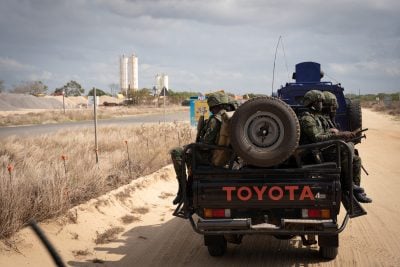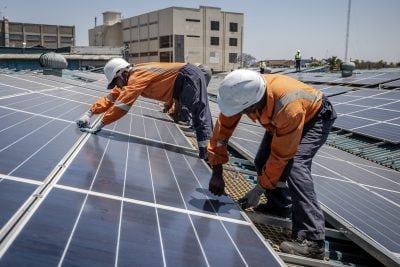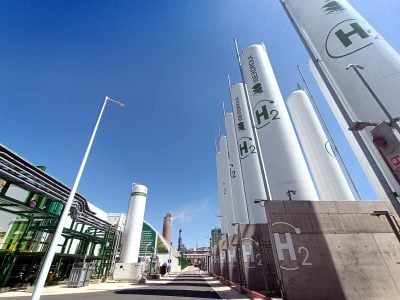In October 2016, the International Monetary Fund (IMF) announced that Ethiopia would overtake Kenya as East Africa’s largest economy, after posting average growth of 10.8% over the last decade. However, recently, it has become uncertain if the East African country can maintain this level of growth because of a series of shocks in 2016, which have harmed Ethiopia’s economy.
The IMF estimated growth would fall to 6.5% in the third-quarter of the year, in large part due to the drought that has hit the core agricultural sector hard. The final figure is expected to be lower still, following the recent wave of anti-government protests that have swept across large swathes of the country.
This year has highlighted the medium-to-long term growth risks within Ethiopia’s economy, which is still driven by public sector spending. The creation of various infrastructure projects will support an increase in foreign investment, but further growth is needed in key areas such as manufacturing and mining. These sectors are likely to take up to a decade to become significant contributors to GDP, and until then, the economy remains unbalanced.
Disruptive Protests
Since November 2015, anti-government protests have rocked Oromia region, which encompasses central and western Ethiopia, and the sometimes violent demonstrations spread to Amhara in the northern and central highlands in August 2016. Protesters attacked foreign assets, including in agribusiness, cement and textiles sectors; while some Ethiopians also held work stoppages, strikes, and boycotts of government-related companies. A number of Western countries have issued travel alerts that have had a dramatic impact on the country’s growing tourism industry. Tourism accounts for 4.5% of GDP in 2015, but the expected rise over 2016-17 will not now materialise.
The full economic impact of the protests is not yet clear, but it has severely dented investor confidence. Several agribusiness firms have stated they will review their investment, with one confirmed exit. The protests have shattered the perception of Ethiopia as a stable country, which is likely to delay new investment, and prevent the establishment of a significant tourism industry.
Historic Drought
As well as the largest protests in the regime’s history, 2016 also saw the worst drought since 1984, triggered by El Nino. The country showed it has improved its resilience to drought, with this event having a less serious impact on growth trends than previous years. Modernised agricultural practices meant the country was able to prevent a massive drop in crop exports, and a quick response from the government ameliorated some of the social impacts.
However, it served as a reminder of what Ethiopia can expect as climate change makes rainfall increasingly unpredictable. Agriculture is still the mainstay of the country’s economy, accounting for about a quarter of growth and employing an estimated 73% of the population. These numbers must both reduce if the economy is to ensure long-term growth.
Diversified Private Sector Growth
The challenges of 2016 have made it clear that medium-to-long term growth will rest on the government’s ability to support a diversified private sector. Over the last ten years, foreign investment has increased tenfold, but much of this has been in the construction sector, driven by government-funded infrastructure projects.
These projects are part of efforts to improve the business operating environment. Government-funded infrastructure projects, in particular, have concentrated on facilitating a better power supply and smoother logistics. For example, with the opening of the railway to Djibouti port in October, import/export times have fallen from 2-3 days to 10 hours. These infrastructural improvements are accompanied by a generous range of incentives that target certain priority areas, including manufacturing and the extractive sectors.
Both areas are likely to see growth over the coming five years, but they start from a low base, with manufacturing accounting for 7% of GDP in 2015, and mining only reaching 1.2% over the same period. There have been positive developments, with leather and textile investments growing over the last years, and the government entering into new mining contracts. Meanwhile, in October, the government created the Ethiopian Mines, Petroleum and Bio-Fuel Corporation, and further investment is likely in the gold sector over 2017. However, it is likely to take at least a decade before either of these sectors becomes a significant contributor to GDP growth, and until then, the fundamental structure of the economy will be unchanged.
Addressing Structural Imbalances
Despite this, over the medium term, Ethiopia’s economic prospects still look healthy. High public spending over the next four to five years will continue to support strong growth rates. However, the events of 2016 have indicated that Ethiopia must address the severe structural imbalances in its economy if it is to sustain strong growth over the long term.
In particular, growth in manufacturing industries and the expansion of the private sector will be vital. This will be a long process, but despite the fragility seen in tourism and agribusiness, it does seem achievable. In the more immediate term, the government must address the protests in Oromia and Amhara, which threaten to derail the country’s economic success story and reverse the gains of the last decade.
Emma Gordon, Senior Africa Analyst at Verisk Maplecroft
Want to continue reading? Subscribe today.
You've read all your free articles for this month! Subscribe now to enjoy full access to our content.
Digital Monthly
£8.00 / month
Receive full unlimited access to our articles, opinions, podcasts and more.
Digital Yearly
£70.00 / year
Our best value offer - save £26 and gain access to all of our digital content for an entire year!
 Sign in with Google
Sign in with Google 


